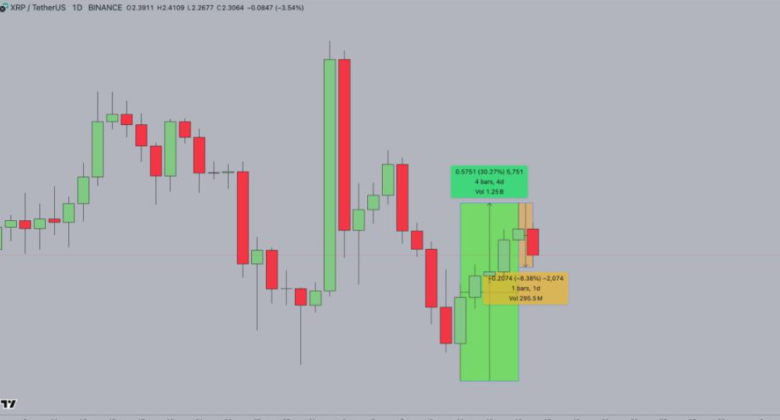
XRP Price Analysis: What Factors Influence Its Market Movements?
Cryptocurrencies have gained immense popularity in recent years, with a select few emerging as frontrunners in the industry. One such digital asset is XRP, a cryptocurrency developed by Ripple Labs, which has experienced substantial growth and fluctuation in its price. In this article, we’ll analyze the factors that influence the XRP price and explore how various elements in the market play a role in determining its value.
Introduction to XRP: A Brief Overview
Before delving into the price analysis, it’s important to understand what XRP is and why it stands out in the world of cryptocurrencies.
XRP is a digital asset created by Ripple Labs, designed to facilitate fast, low-cost cross-border transactions between financial institutions. Unlike Bitcoin or Ethereum, which focus on decentralization, XRP is more centrally governed by Ripple, and its main utility lies in providing liquidity for payment networks. XRP is also used to pay transaction fees on the Ripple network.
The price of XRP has fluctuated greatly over the years, often affected by both internal and external factors. Let’s take a closer look at the primary influences on XRP price movements.
Factors Affecting XRP Price Movements
1. Market Demand and Supply
As with any financial asset, the basic economic principle of demand and supply plays a major role in the price of XRP. When there’s more demand for XRP, the price tends to rise. Conversely, when demand decreases, the price tends to fall.
Demand can be influenced by several factors, including news events, partnerships, and adoption within financial institutions. For example, if Ripple signs a new partnership with a major bank or payment provider, the demand for XRP might increase, leading to a higher price.
Additionally, the overall market sentiment surrounding cryptocurrencies, particularly Bitcoin (BTC), can also affect XRP. Since Bitcoin often leads the market in price trends, if BTC experiences a surge, it could positively influence the price of XRP as well.
2. Regulatory Developments
The regulatory landscape surrounding cryptocurrencies has been one of the most significant factors influencing XRP’s price movements. XRP has had its share of regulatory challenges, especially with the U.S. Securities and Exchange Commission (SEC) lawsuit. The lawsuit, which alleges that XRP is an unregistered security, has had a profound effect on the price of XRP. Negative news surrounding legal battles can cause investor uncertainty, leading to price drops.
On the other hand, positive regulatory developments, such as clearer guidelines or favorable decisions for Ripple, can trigger bullish movements in the XRP price. A ruling in favor of Ripple could send XRP’s price soaring as investors gain confidence in the asset’s long-term viability.
3. Market Sentiment and Speculation
Cryptocurrencies, including XRP, are highly sensitive to market sentiment. News, social media, and public perception can sway investor behavior, which directly impacts the XRP price. Speculators often drive short-term price fluctuations, buying and selling based on rumors, trends, and emotions rather than fundamentals.
For instance, announcements on Ripple’s progress, partnerships, or potential listing on major exchanges can prompt speculative buying. Similarly, any rumors of Ripple facing regulatory hurdles or competition from other payment protocols can cause fear-driven sell-offs, driving the price of XRP down.
4. Technological Developments and Updates
XRP’s price can also be affected by technological advancements and updates on the Ripple network. Ripple has consistently worked on improving its platform, with efforts focused on enhancing scalability, transaction speed, and security.
Any updates, such as the launch of new features or partnerships that improve XRP’s usability, can have a positive impact on its price. Technological developments that enable XRP to be used in more real-world applications can also lead to increased demand, thus driving the price up.
5. Adoption by Financial Institutions and Payment Providers
One of the key driving factors behind XRP’s price is its adoption by financial institutions and payment providers. Ripple’s primary use case is to offer liquidity for cross-border transactions. As Ripple expands its network of partners, the XRP price is often affected by how much the currency is used in actual transactions.
The more financial institutions and payment providers adopt XRP, the greater the demand for the asset, which can drive the price higher. Ripple’s success in securing partnerships with major financial players, such as Santander and American Express, has often been followed by price rallies, as these partnerships signify the growing legitimacy of XRP in the global financial ecosystem.
6. Bitcoin Price Correlation
XRP, like many other cryptocurrencies, is often correlated with Bitcoin’s price movements. Bitcoin, being the largest and most well-known cryptocurrency, tends to set the tone for the broader market. When Bitcoin experiences a price surge, it typically boosts confidence in the overall crypto market, which can lead to higher demand for other assets like XRP.
Conversely, when Bitcoin’s price declines or faces periods of volatility, the market sentiment can turn negative, affecting the prices of altcoins like XRP. Therefore, analyzing Bitcoin’s market movements is crucial when predicting potential price changes for XRP.
7. Liquidity and Market Structure
The liquidity and market structure of XRP also play a significant role in its price movements. Liquidity refers to how easily an asset can be bought or sold without significantly impacting its price. In highly liquid markets, the price of XRP is less likely to experience large fluctuations due to significant buy or sell orders.
The market structure of XRP, particularly its presence on cryptocurrency exchanges, also influences its price. XRP is traded on numerous major exchanges, and the volume of transactions on these platforms can contribute to price shifts. Exchanges that add or remove XRP for trading can influence its market demand, further affecting its price.
8. Broader Economic Factors
Like traditional financial assets, the XRP price is also impacted by broader economic factors. The performance of the global economy, interest rates, inflation, and geopolitical events can all have ripple effects on cryptocurrency markets. During times of economic uncertainty, cryptocurrencies, including XRP, are often seen as speculative assets, and price movements can be highly volatile.
For instance, economic crises or inflationary pressures may drive investors towards alternative assets like cryptocurrencies as a hedge against traditional financial market risks, which could affect XRP’s price.
XRP Price Forecast: What Lies Ahead?
The future of XRP’s price remains uncertain, as it depends on a range of dynamic factors. However, key trends suggest that XRP’s price could experience continued volatility, especially with ongoing regulatory challenges and the wider adoption of digital currencies.
Ripple’s ongoing development of the XRP Ledger and its partnerships with global financial institutions offer a promising outlook for XRP’s long-term potential. Nevertheless, external factors, including market sentiment and Bitcoin price trends, will continue to play a role in its price movements.
Frequently Asked Questions (FAQs)
Q1: What factors most influence XRP price?
XRP price is mainly influenced by market demand, regulatory developments, market sentiment, technological advancements, adoption by financial institutions, and Bitcoin price movements.
Q2: Can the SEC lawsuit impact the XRP price?
Yes, regulatory challenges such as the ongoing SEC lawsuit can significantly impact XRP’s price, as they introduce uncertainty into the market. A favorable ruling could increase the price, while a negative outcome could lead to price drops.
Q3: How does Bitcoin affect XRP price?
XRP often correlates with Bitcoin’s price trends. When Bitcoin rises in value, it can positively affect XRP’s price, while a decline in Bitcoin’s value can lead to negative price movements for XRP.
Q4: Will XRP price go up in 2025?
Predicting the future price of XRP is difficult due to the volatility of the cryptocurrency market. However, continued adoption and technological improvements could contribute to price growth, depending on the broader market and regulatory developments.
Q5: What are the main use cases for XRP?
XRP is primarily used for cross-border payments, offering liquidity for financial institutions and payment providers. It enables faster and cheaper transactions compared to traditional banking systems.
Q6: How can I buy XRP?
XRP can be purchased on major cryptocurrency exchanges such as Binance, Coinbase, Kraken, and others. Ensure you have a secure wallet for storing your XRP once purchased.
Conclusion
In conclusion, understanding the factors that influence XRP price movements is crucial for anyone looking to invest in or track this cryptocurrency. From market demand and supply to regulatory shifts and technological developments, XRP’s price is highly influenced by both external and internal factors. By staying informed on these key drivers, investors can better navigate the volatility of the crypto market and make more educated decisions about XRP.



